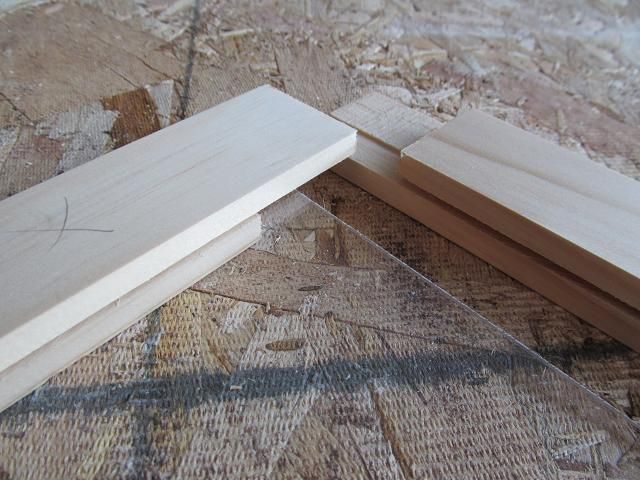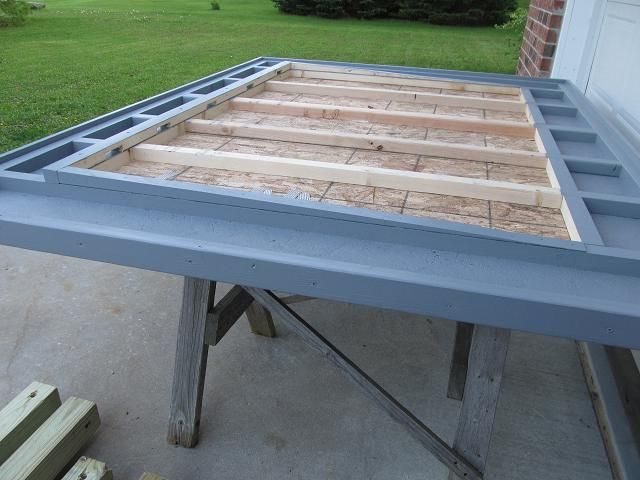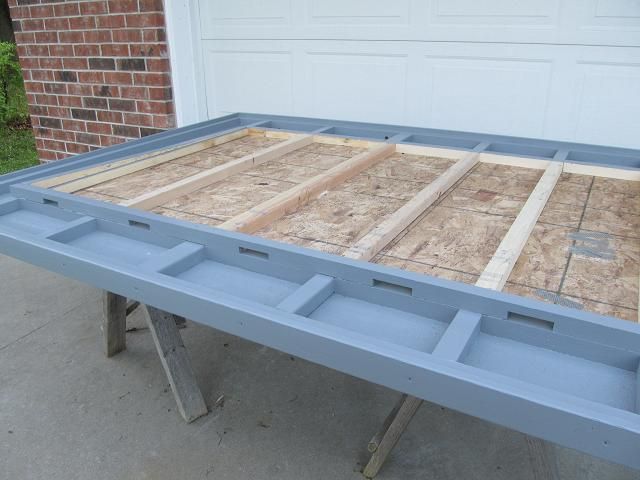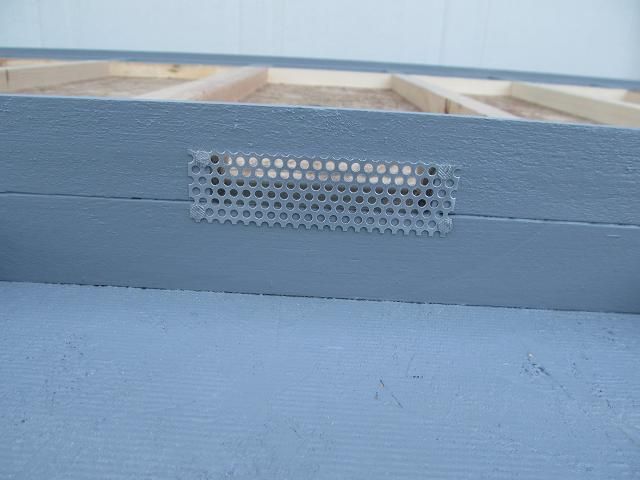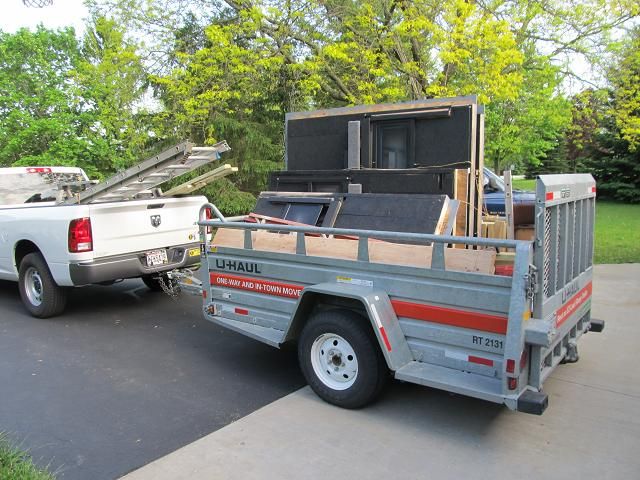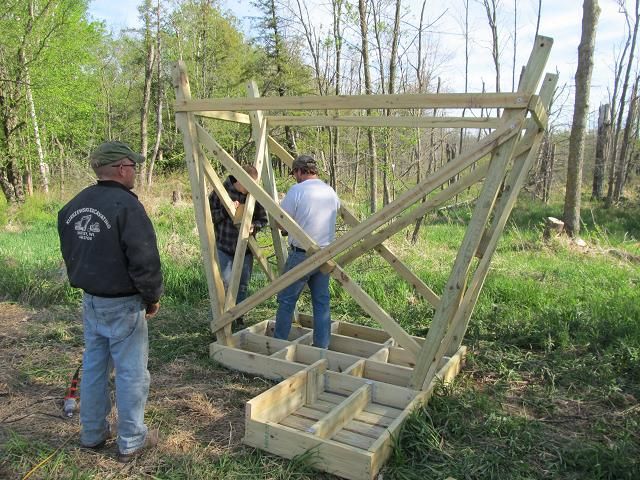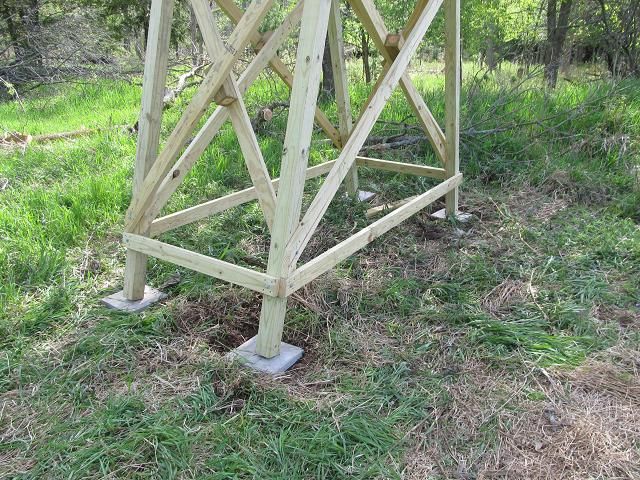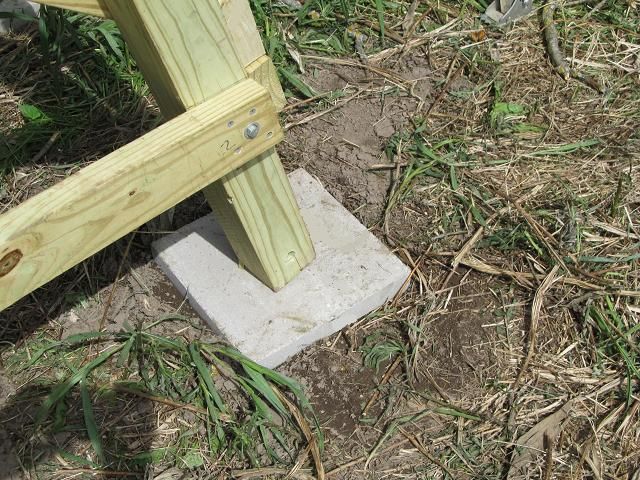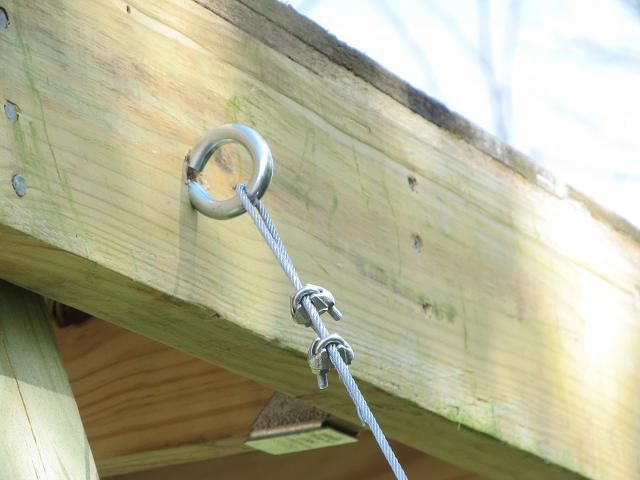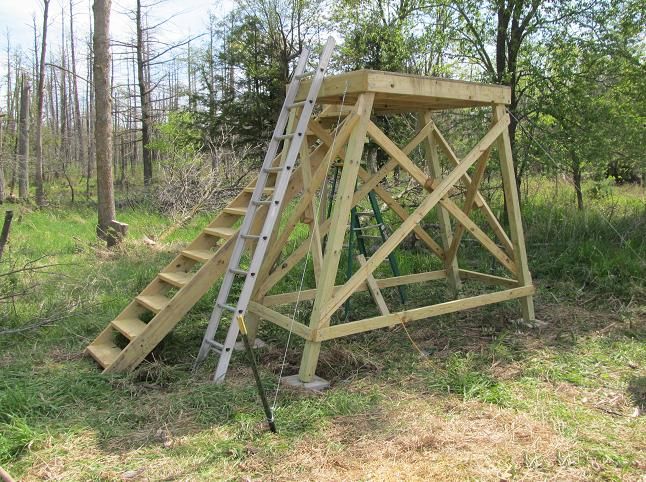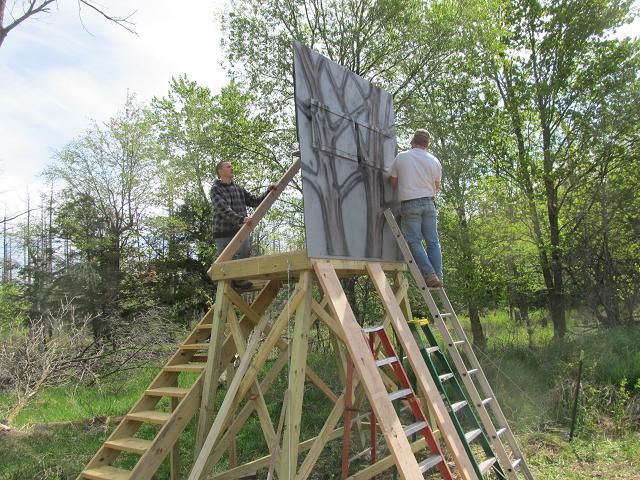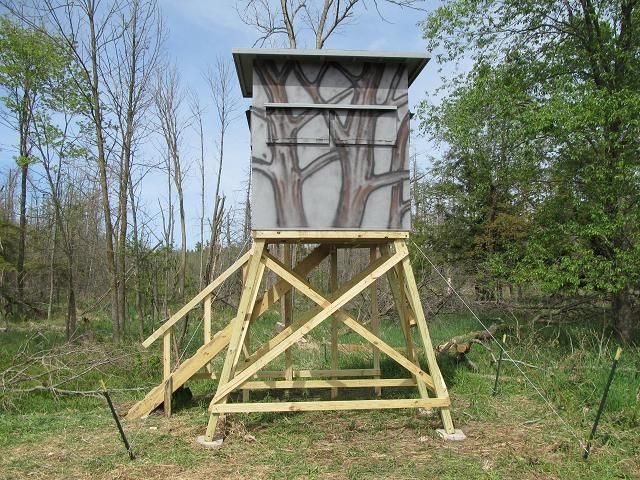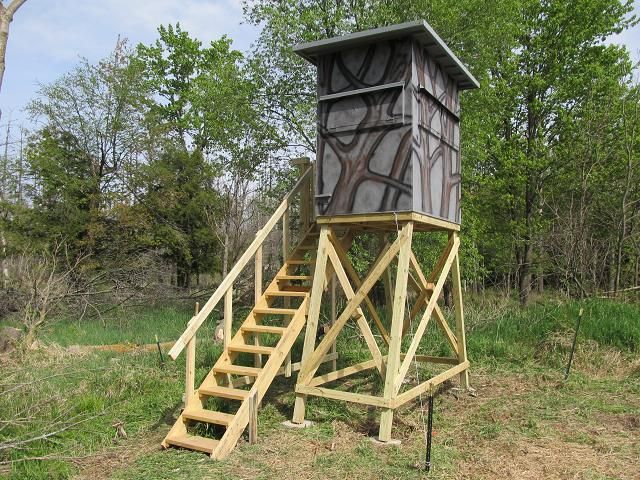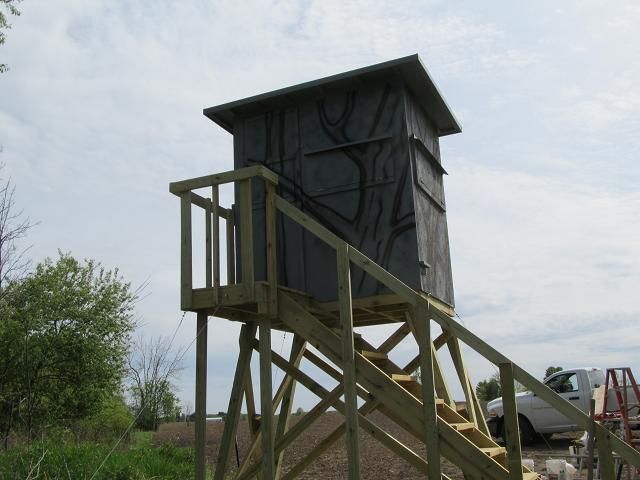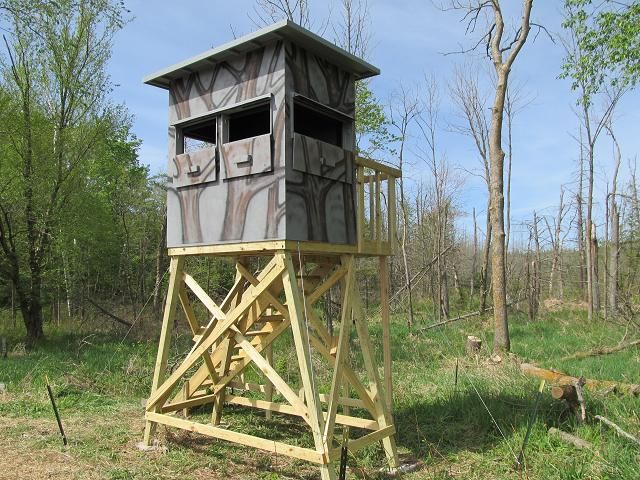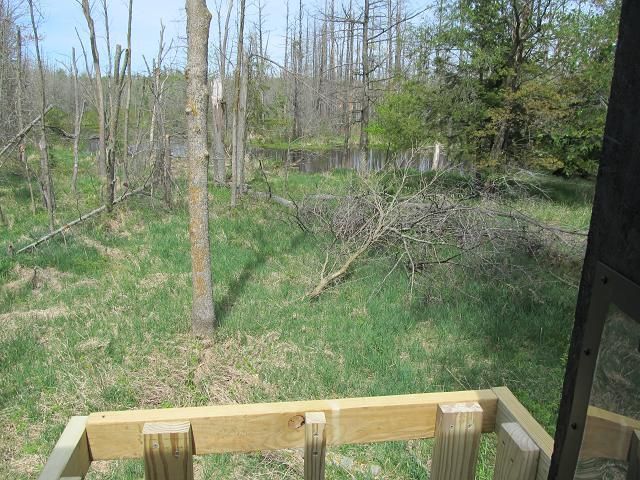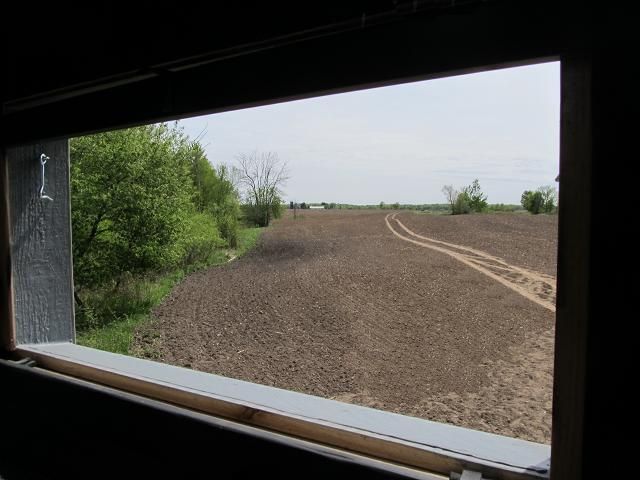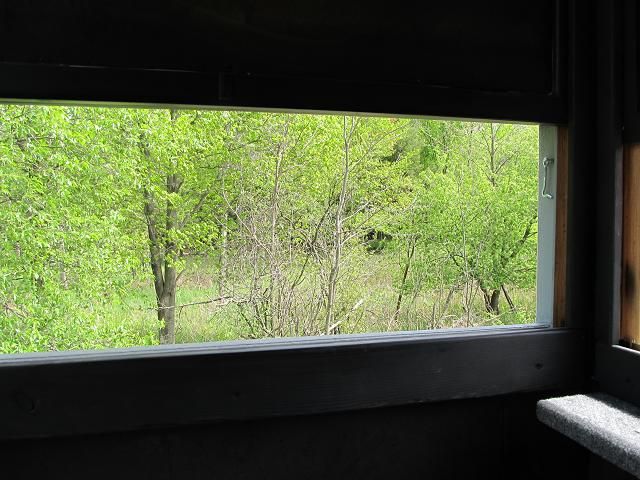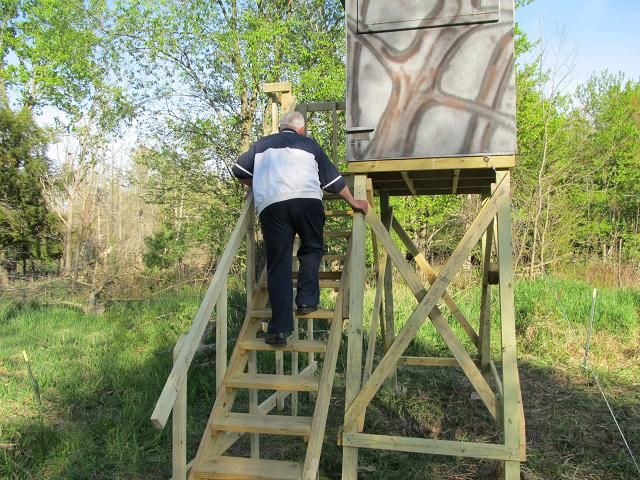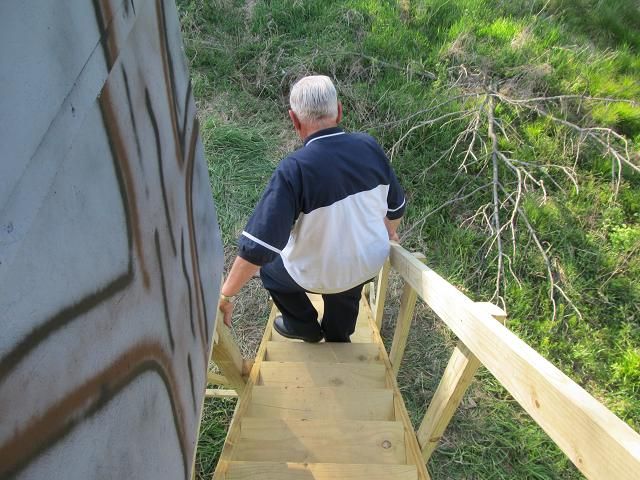|
|
Post by Ron Kulas on Jan 22, 2012 18:56:18 GMT -6
As my Dad gets older (84 years young this year) and as I have been helping more and more new hunters get into the sport, comfort has been more of an issues to extend time on stand. I have several locations in funnels on farm land that would work well with an enclosed tower type blind since I have already had success year after year with ladder stands in those locations. I plan to build some tower type blinds but would like to make them dual purpose stands that work for both gun and bow hunting. I scanned the web for ideas and designs that are commercially available. I quickly learned that manufactured blinds are very expensive (from $700 to $1,500 and that’s just the blind without the wooden structure that gets it off the ground) So I set about designing my own. My objectives were to have a stand that can be enclosed for really foul weather, that could seat 2 people comfortably, elevated at least 10 feet to the platform meaning a seated person’s eye level would be about 14 feet off the ground, has horizontal windows for gun hunting and lower, vertical windows for bowhunting. I then used a CAD design software to model the stand. Here is one of the early versions. It does not yet have the roof or door designed but I have since worked out those details.  The stands will be built from treated lumber but I want to build a prototype out of regular pine to work out the bugs and make improvements. Here is enough lumber to build the entire stand with the exception of the plywood and window materials.  I priced this amount of treated lumber at Home Depot and its around $250 and includes 4) 4 x 4 x 10 long 48) 2 x 4 x 8 long 6) 2 x 6 x 8 long 7) 2 x 4 x 10 long The design has to be 76 year old friendly which is why there are more rungs that are closer together on the ladder than need be for strapping young folks. The internals of the box are 41 by 64 by 75 tall. Here are some pictures of the prototype during construction. (I have already begun making changes from the CAD model. ) 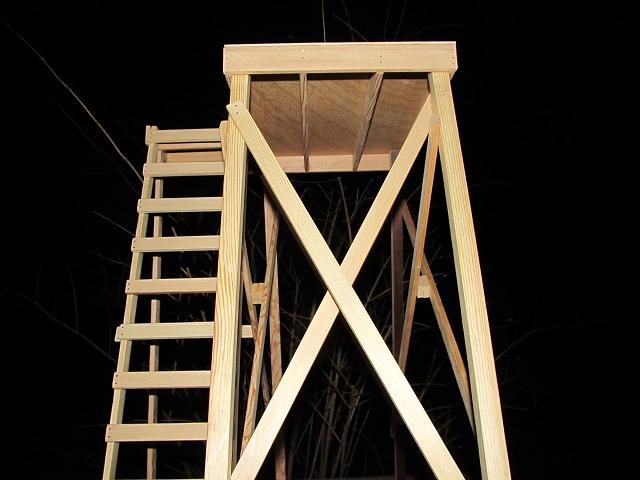 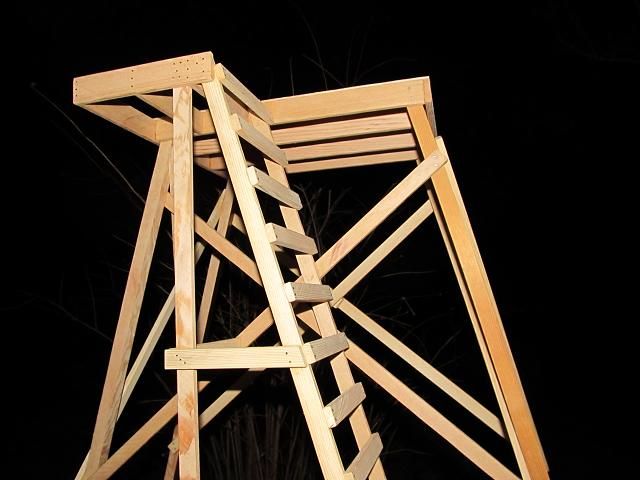 The walls being framed up. 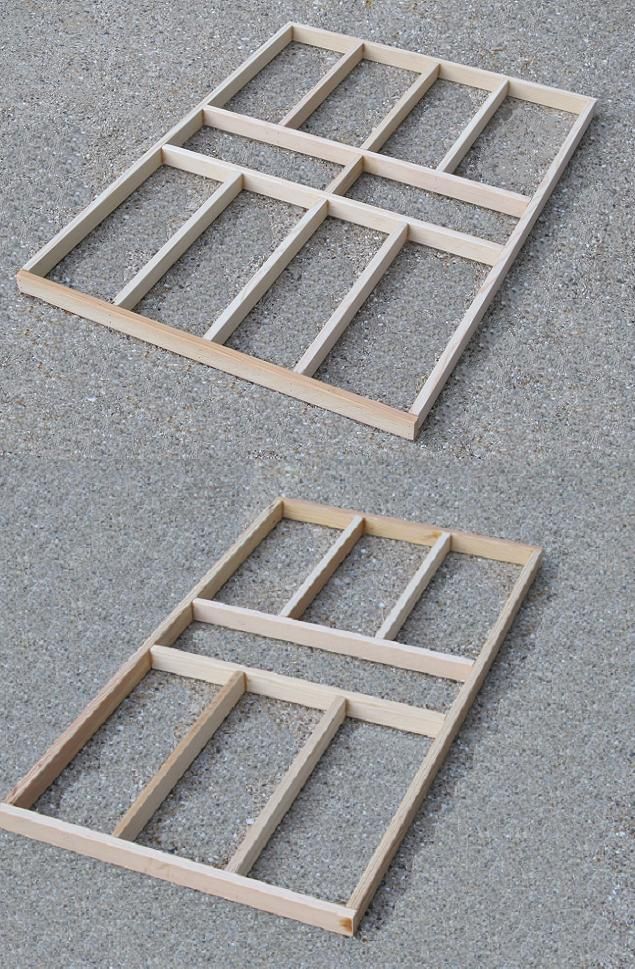 Here is a wall with the sheeting on and painted (I figured the inside of the blind should be dark like most pop-up blinds) The dotted lines indicate a potential location for bowhunting, vertical windows but I am reconsidering their locations at this point. 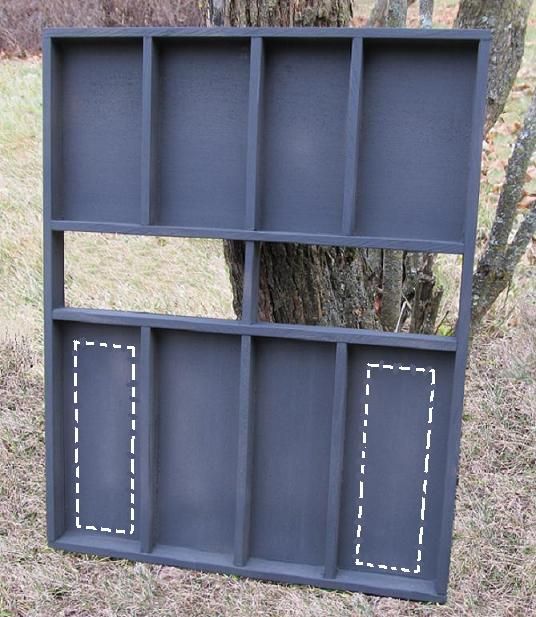 A few views of the framed up box. 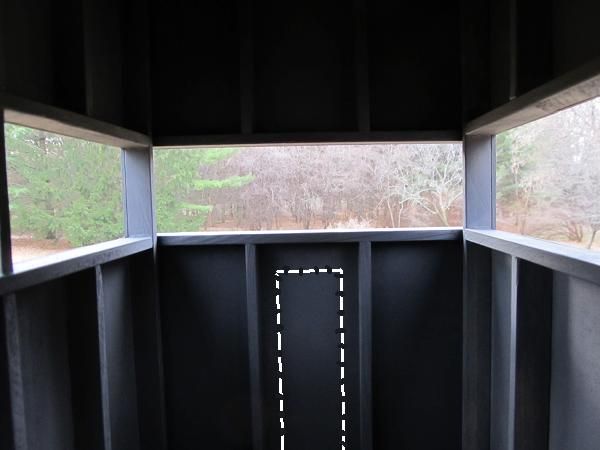 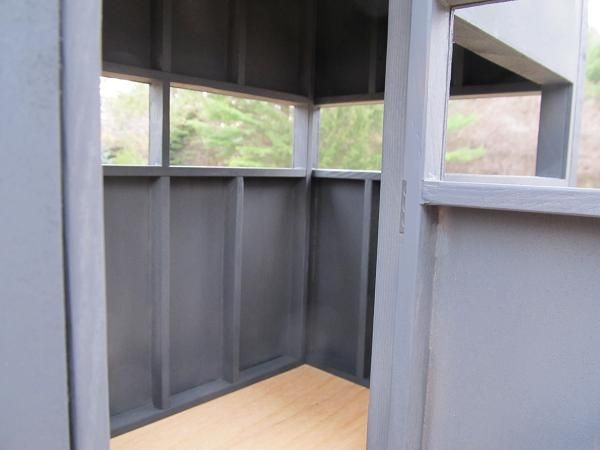  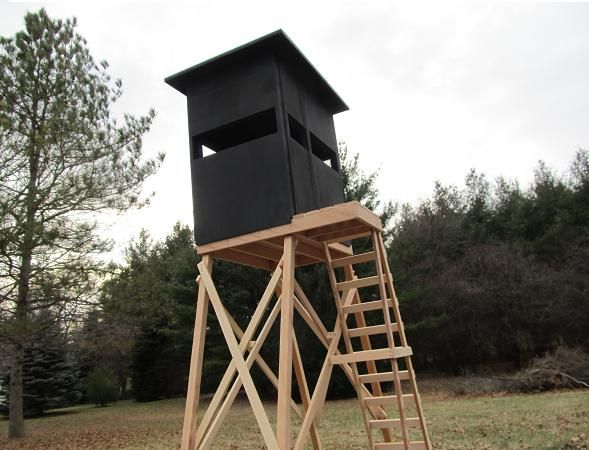 I think I need to make the porch larger and change the swing of the door. I also plan to install safety rails around the porch. 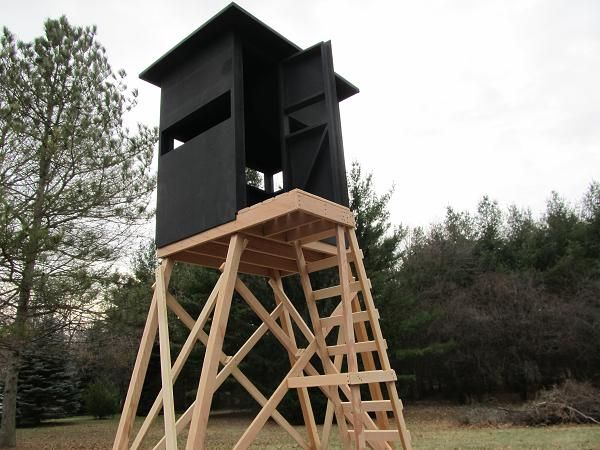 As long as I have a black stand, I will have to (during the firearms season) use a black gun. I dont have an all black bow or I would have used it for the picture. 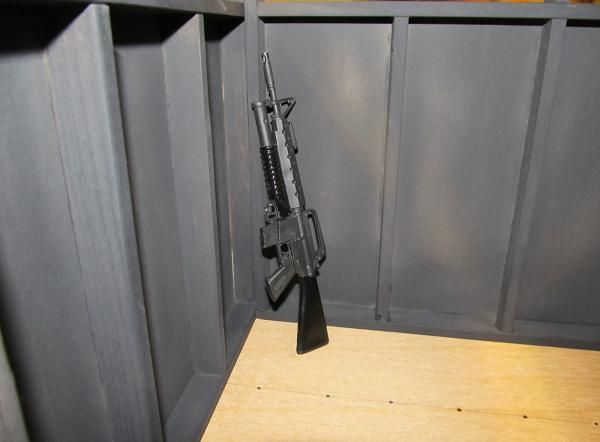 |
|
|
|
Post by Ron Kulas on Jan 22, 2012 18:56:58 GMT -6
I added a 2nd support under the outer corner of the porch and redid the bracing. I also added a hand rail around the porch. I think I am about finished with the prototype stand as far as improving the design and construction. I need to work out the window details now. 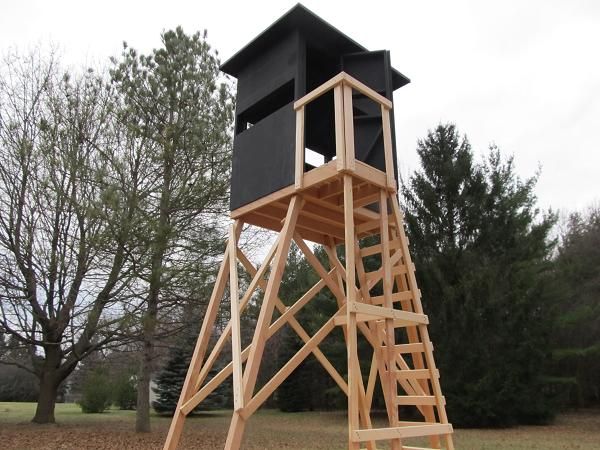 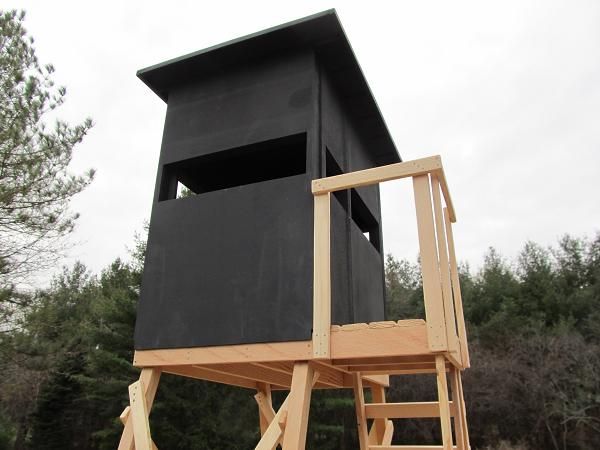 |
|
|
|
Post by Ron Kulas on Jan 22, 2012 18:57:31 GMT -6
I have had inquires about what I plan to do with this prototype tower blind and is I would be willing to part with it. The answer is yes but you have to get past the helpers I had making it. Here is Joe guarding the stand. He wont let anybody near it. He is guarding it now with the rifle I posted earlier and has set up his own "occupy" camp.  He only lets his other friend Joe near the stand. Both are ex-military and have bad attitudes. I thought the photo of the rifle in the blind would have tipped some folks off since it has two triggers (the second one being for the grenade launcher) 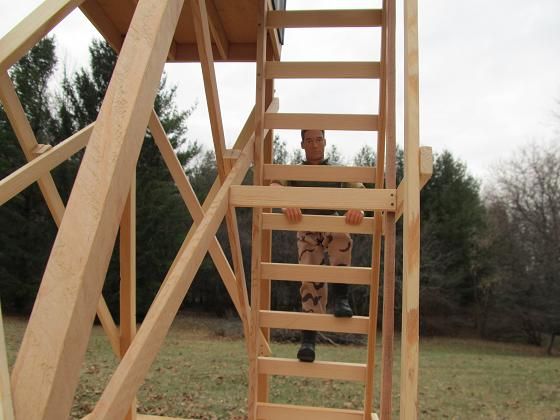 Plus they have this huge guard dog named Roscoe patrolling the perimeter.  They are all jacked up on Soda in massive quantities.  If you haven’t figured it out by now, this is a 3/16 scale prototype model that I built to help me address all the design concerns ahead of time rather than after spending much $$$ on treated wood when I build the real stands. Here is one of my “Scale” 2 by 4’s on a real 2 by 4. 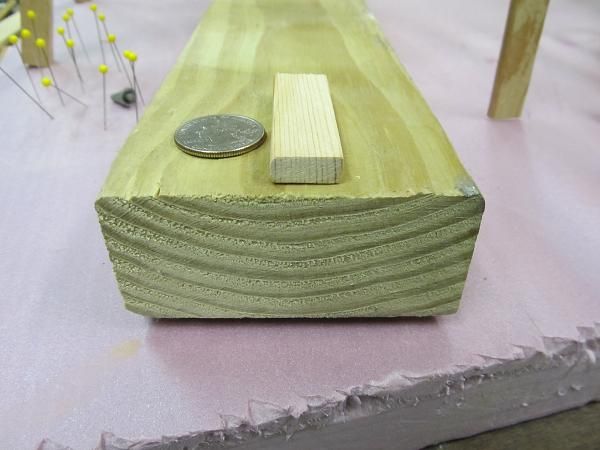 Here are the scale sized nails I used. 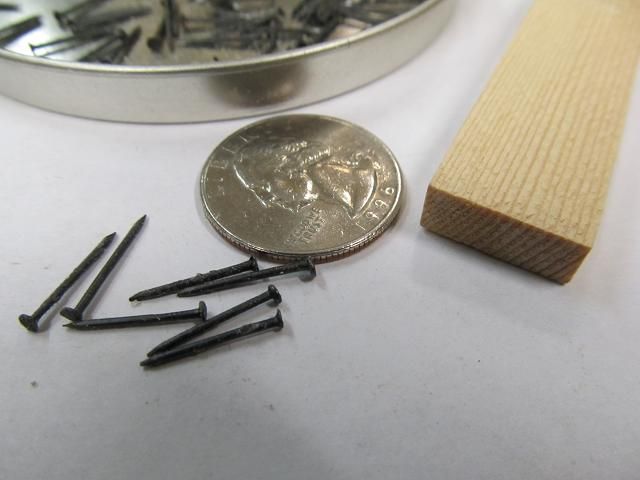 Here is Joe taking a break after helping test the stand.  The lumber I cut and stacked for that first photo was all cut on my table saw. The banding on that stack of 2 by 4’s is just a thin strip of black electrical tape I cut with a razor.  |
|
|
|
Post by Ron Kulas on Jan 22, 2012 18:58:00 GMT -6
OK, enough with the scale model. Time to build the real stand. I began working on the full scale tower stand over the holidays. The one issue I did not address with the scale model was the windows, namely the design and how they would open. At first I thought sliding side by side would be a good option but I forever lose half the window. I didn’t want a hinged design that either swung in or out because of the motion and the issues with keeping them open at a time when a deer approaches so I am messing around with a vertical slider with a counter weight balance system which makes the window very easy to open and keeps it in the open position without having to secure the window. The Plexiglas and wood frame is 15 inches by 42 inches and weighs about 5 pounds The window rides in tracks on each end and slides up but the weight of the window was a bit much for super easy opening so I used the type of counter weight system so many milk house doors had on the farm. I have not yet removed the protective film on both sides of the window nor have I installed the felt sliders to quiet the window but I got a chance to play around with the design to see if this is the route I want to go. Here is a view from the inside. The handle to open the window is a coat hook I modified and turned upside down. 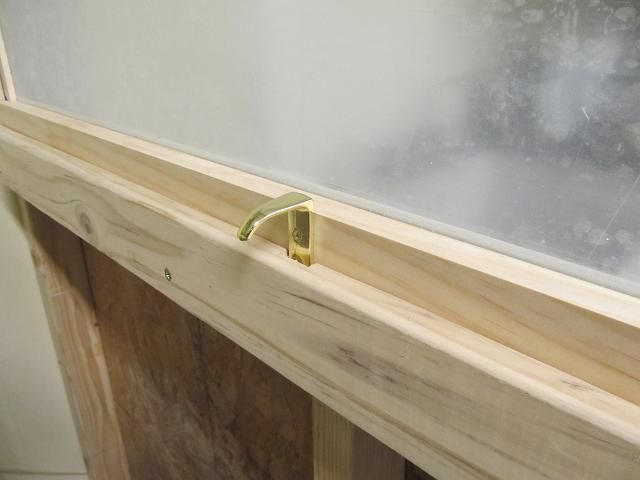 The sill and sash on the outside are made from treated lumber and painted. I installed the sill at quite an angle to ensure water run-off as I don’t want water to get into the bottom track of the window and then freeze. 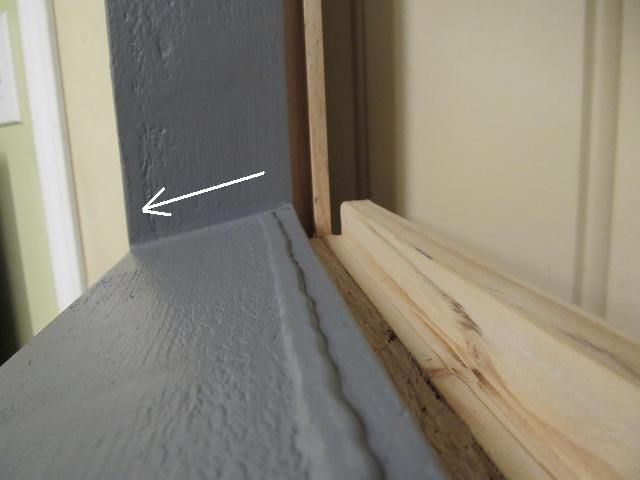 In the widow itself I installed a weather shield sort of mini awing made of aluminum. It’s the angle piece used for suspended ceilings. 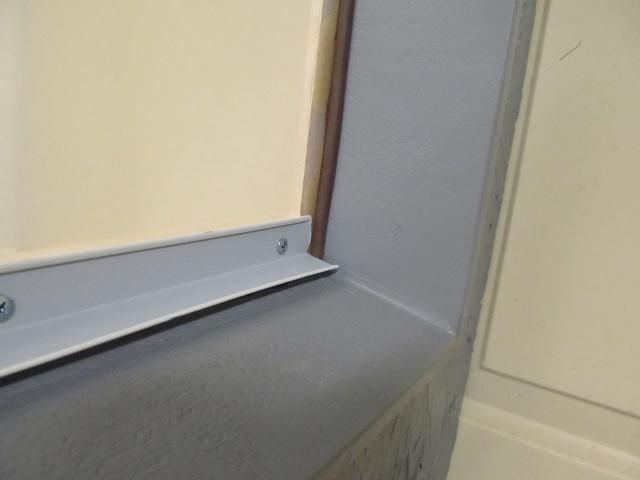 With the window open, you can see how it protects the bottom track from rain. On each vertical end, I installed a “P” shaped piece of adhesive backed weather stripping also to keep water out. 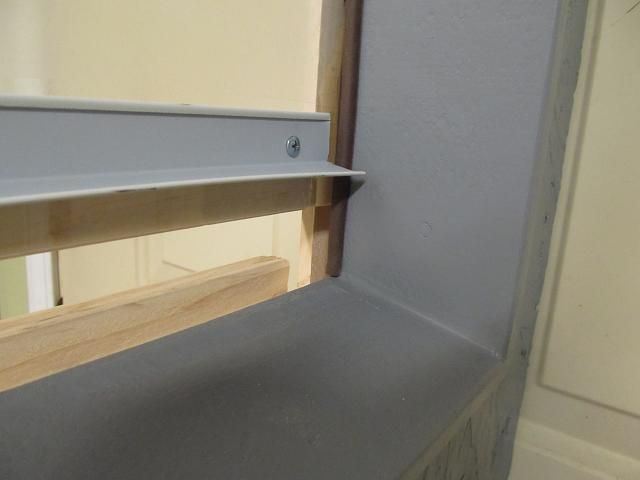 To further detour rain, I added a wood strip above the entire window and then used a piece of roofing material called a gutter apron only I used it upside down to act as an additional awing to keep rain out. 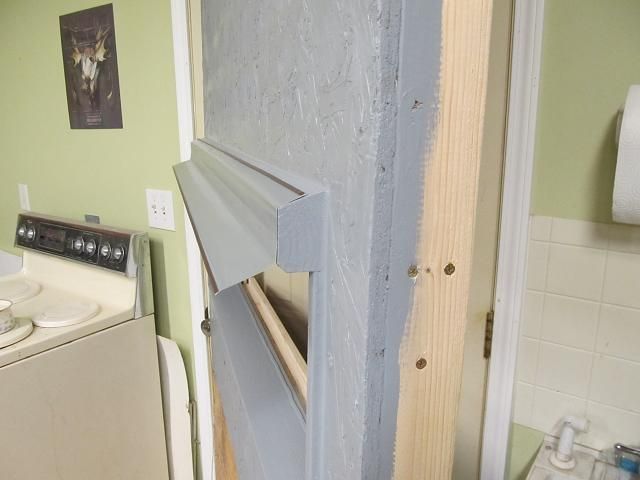  Here is a picture of the temporary rope I used to tie the window to the counter weight. After opening the window a few times and hearing the hard stop I installed a block of wood and a piece of sticky backed foam above the window to quiet the stop.  Here is a video of the window being opened. It takes very little effort to lift. The “Clunking” sound you hear at the top of the window opening is not the hard stop but rather the crude counter weight at the other end of the rope as it swings and hits the wall. For a better and quieter counter weight I envision a PCV tube with the right amount of weight (perhaps sand) with end caps on the PVC tube. That sand weighted PVC would slide inside a slightly larger piece of PVC tucked into the corner near the floor. This keeps the weight from being bumped or swinging and making noise. www.youtube.com/watch?v=QTON8raSA_c&feature=youtu.beIt looks promising so far. I still need to work on making the windows quieter. |
|
|
|
Post by Ron Kulas on Jan 22, 2012 18:58:28 GMT -6
Since the sun and its UV rays as well as the grit carried in the wind as well as rain, snow and the risk of birds trying to fly through the blind only to smash into the Plexiglas are all negatives that are likely to occur during the 8 months this blind will sit idle every year, I have decided to install off-season shutters to protect the windows and further weatherproof the blind. The other reason in doing so is that it costs very little to provide this protection since the shutter is made from the scrap created by cutting the window opening. The small latches and hinges came to less than $6.00. In the following pictures, I have removed the aluminum awning made from the gutter apron that will be installed above the window. In prior pictures I held it in place with tape for the photo. The aluminum is too fragile for the rigors of transportation so it will be installed on-site once the blind is erected. Here is the view from the outside with the shutter raised. 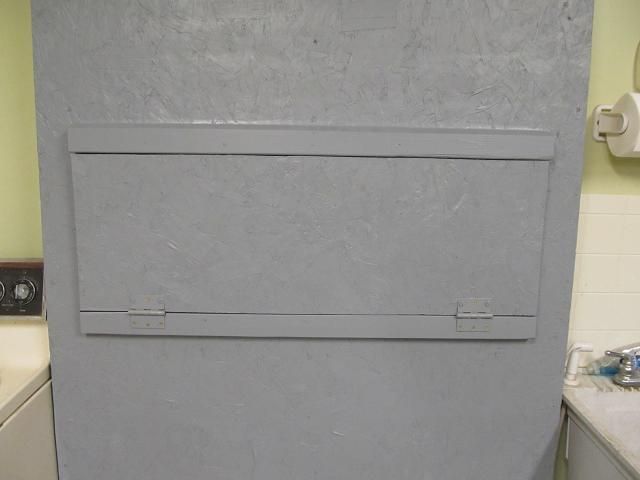 The shutter sits against the lip created by extending the window sash.  I installed a wooden handle to raise and lower the shutter as well as 2 latches to keep the shutter closed.  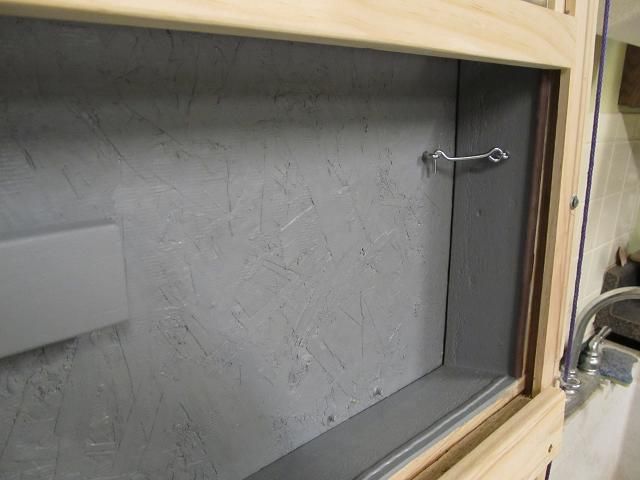 The handle has a deep finger groove to make it easy to grab and hold on while raising the shutter.  The view from the outside with the shutter lowered. 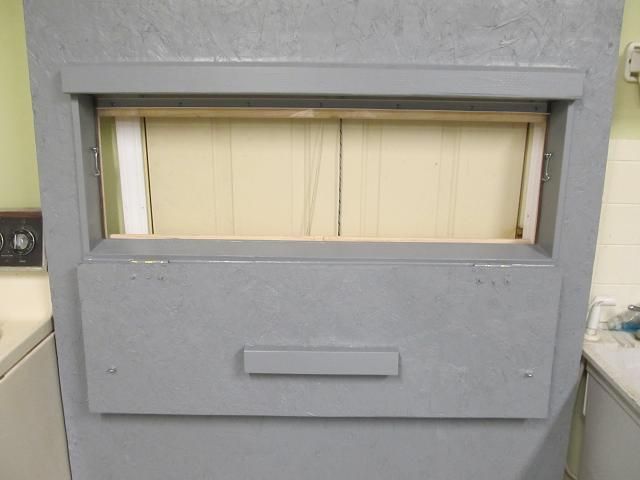 This seems like a good and low cost way to protect the windows. |
|
|
|
Post by Ron Kulas on Apr 5, 2012 20:45:42 GMT -6
I finally got some free time to work on the blind now that its warm enough. I got the remaining walls built and positioned them together for a fit-up and so I can start working on the rest of the shutters and sliding windows. 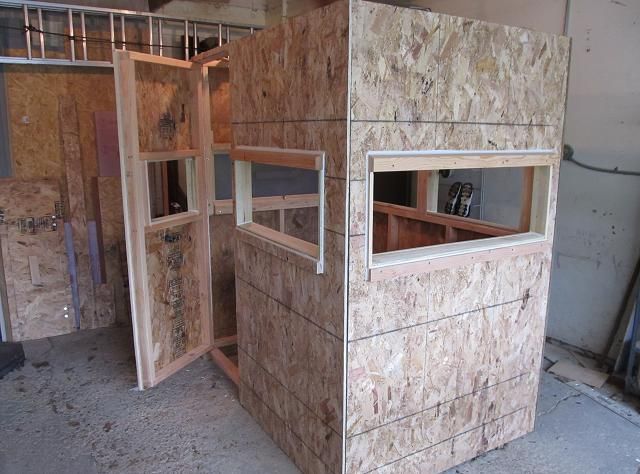 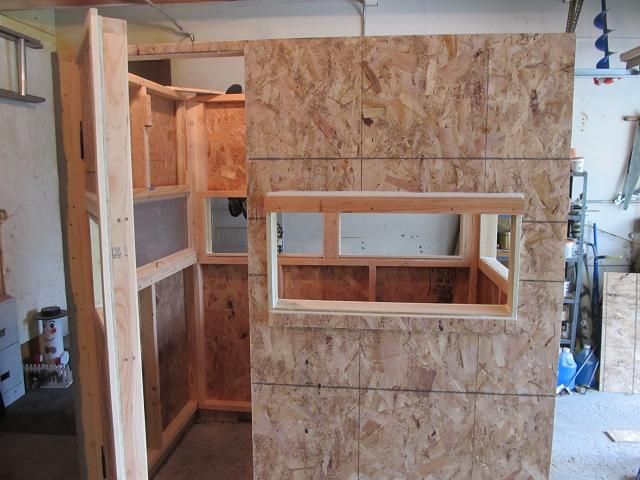 The box now has two coats of Behr Premium exterior paint and the off season shutters are installed. The shutters will protect the stand and especially the Plexiglas windows during the 9 months of the year the stand sits outside unused and exposed to the elements. 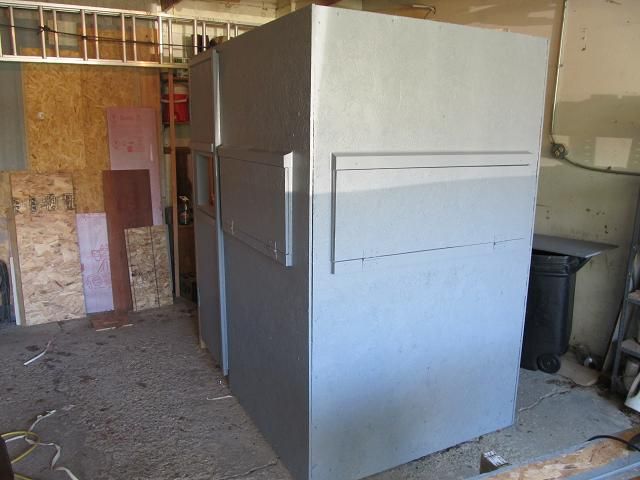 The view from inside. I have yet to install the sliding Plexiglas windows on the inside. 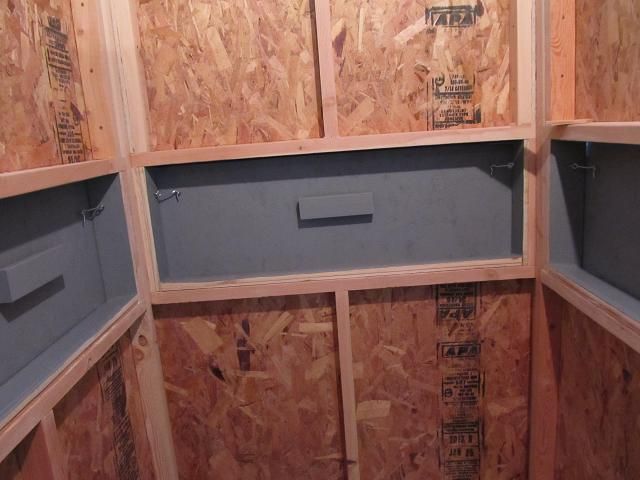 The door has a smaller window and the Plexiglas will not open like the windows on the walls. As such, I had to install a dead bolt on the outside to keep it closed in the off season 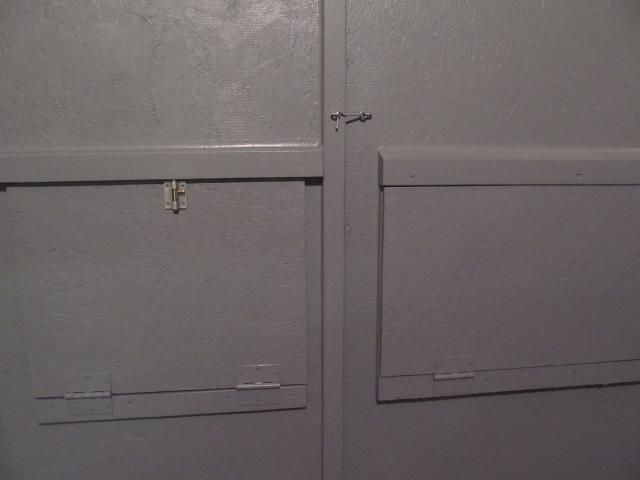 Here the shutters are down. 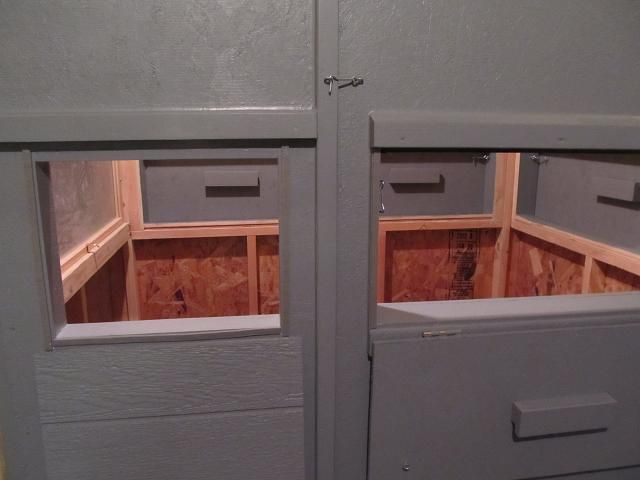 There is a self adhesive foam gasket all around the window opening that the shutter touches to make a weather tight seal. Now its time to build the roof. |
|
|
|
Post by Ron Kulas on Apr 11, 2012 5:54:14 GMT -6
With the box mostly done, I turned my attention to the roof. I was going to use a spreadable rubberized roof coating but last weekend I was up North cutting firewood and my brother told me about all the rubber roof material he had on hand so I am going that route. The roof is made from 7/16 OSB and framed with 2x2's (except where the seam where the two sheets meet, there I used a 2 x 3 and caulked the joint before screwing the OSB down). The roof overhangs the box by 8 inches all around.  Then I gave the exposed underside 2 coats of the same colored paint. The center portion (inside ceiling of the box) will be insulated)  Ready to apply the rolled roofing material. 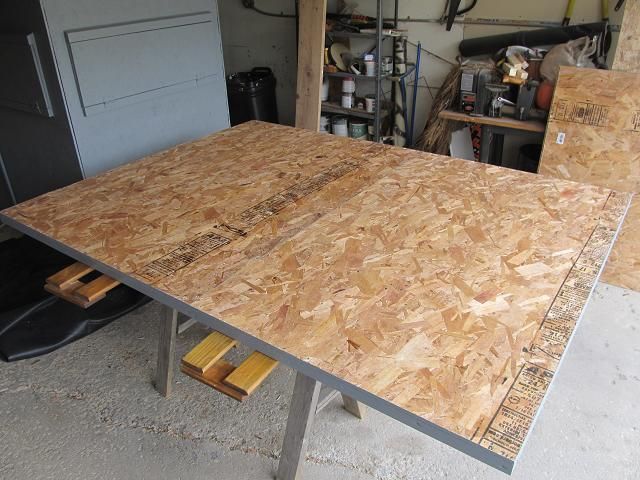 The Rubber is thick (just over 1/16th inch and very stiff (and heavy) 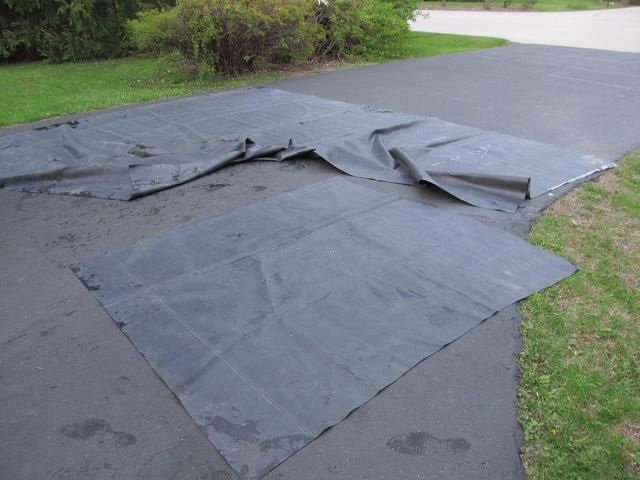 Its been cold lately (its 33 F right now) so I will have to wait until I can set the roof out in the sun to warm it up enough to stretch and smooth out the rubber before I can attach it all around the edge. 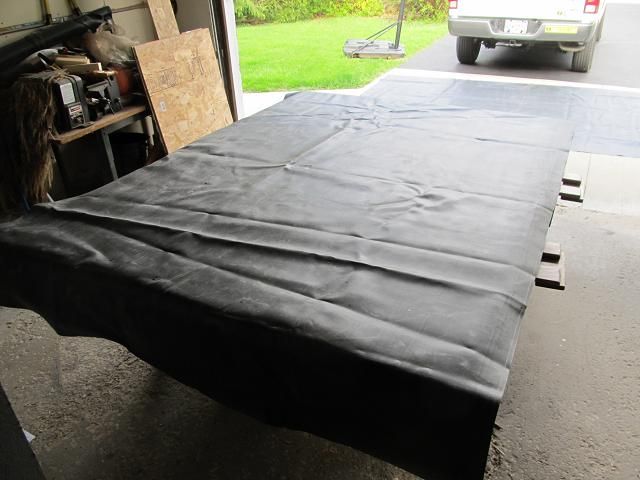 |
|
|
|
Post by Ron Kulas on Apr 12, 2012 5:07:26 GMT -6
After spending a few hours in the warm sunshine, the rubber roofing material was easy to smooth and flatten. The wooden strips around the perimeter help hold it in place. 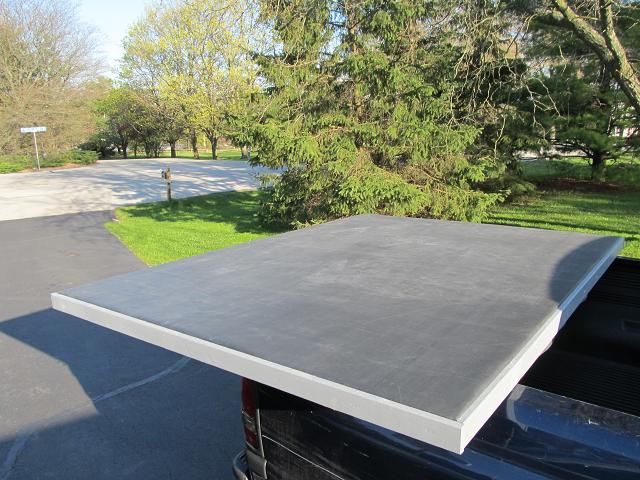 Then I used clear silicone caulk all around the top where the rubber meets the wood. This roof should last a very long time. 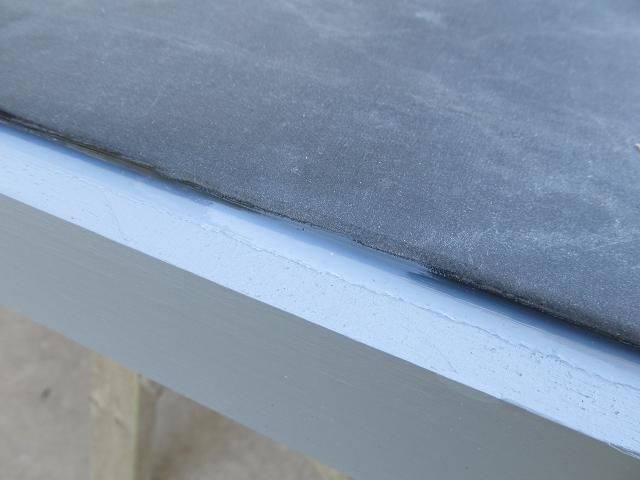 |
|
|
|
Post by Ron Kulas on Apr 12, 2012 20:54:00 GMT -6
Today I built the frame for the floor. Its made from treated 2 x 6 with joists on 16 inch centers. Then because I had lots of scrap ends, I filled in the joist spaces with additional blocking. Is it overkill?? You bet. I don’t want a floor that creeks and groans. I’m building it once so I want it too be strong rather than wish I would have when its too late to do anything about it.  The first layer of ½” OSB was screwed down after laying beads of construction adhesive on all the joists. Then I laid down more construction adhesive and another layer of ½ OSB  Now I have a floor that an inch thick that is both glued and screwed. Is it over kill?? You bet it is. 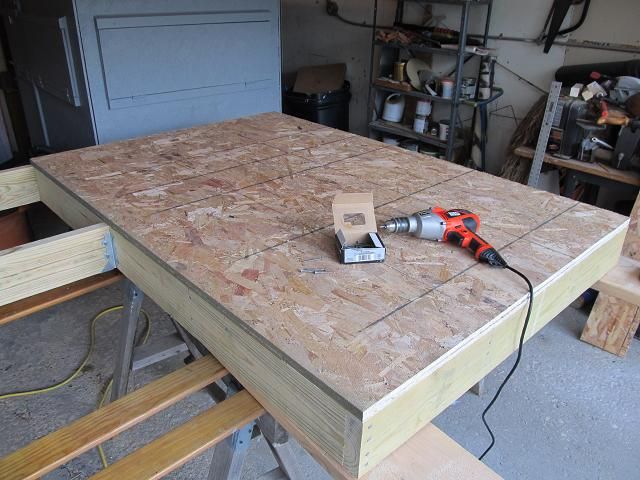 |
|
|
|
Post by Ron Kulas on Apr 15, 2012 21:00:17 GMT -6
I’ve moved the stand deck out to the back patio because I need the room to build the larger parts of the stand. I leveled it up because when I poured the back patio I used a lot of slope for good drainage. Eventually I will bring all the walls out here as well and give them a test run before shipping the stand to its permanent home. I would rather discover surprises in the shop than out in the woods.  I painted the exposed edges even though the door threshold will cover this area and the OSB on the door will protect it. I just figured it was better safe than sorry with melting snow.  Then I framed up both of the sides of the base and marked the pieces and disassembled them.  If you go all the way back to the beginning of this project you will see I had intended to use a ladder to get into the stand. Since this stand will be used by hunters in their 80’s as well as little kids. I went back to the drawing board (literally) and designed a very easy to climb set of stairs. The cost and time went up a bit but will make for a better and safer climb. While the plan does not show it I will be adding more vert railing on both the hand rail and the deck rail. 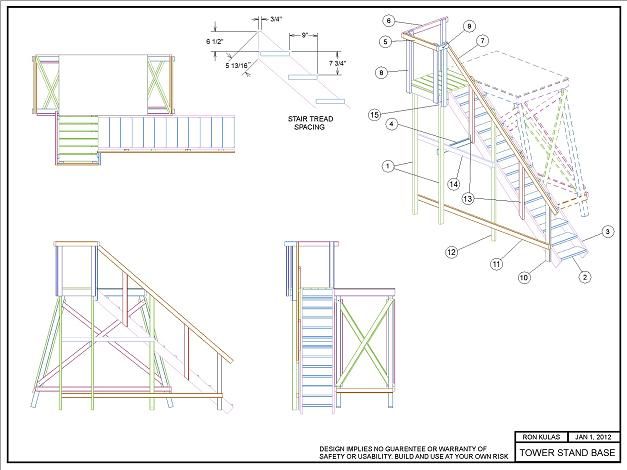 I don’t know what it is about treated lumber but finding 2, 12 foot long 2 x 8’s meant sorting through a lot of warped and twisted junk to get two that were usable.  It was a fun rainy Sunday project. Its going to take more than a couple guys to raise and position this staircase. Its pretty heavy. 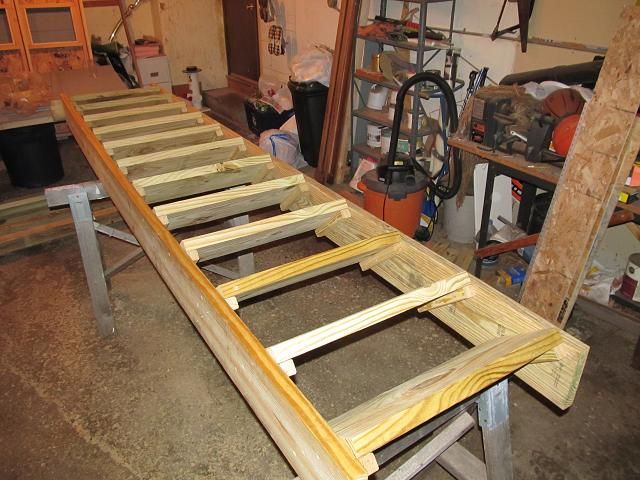 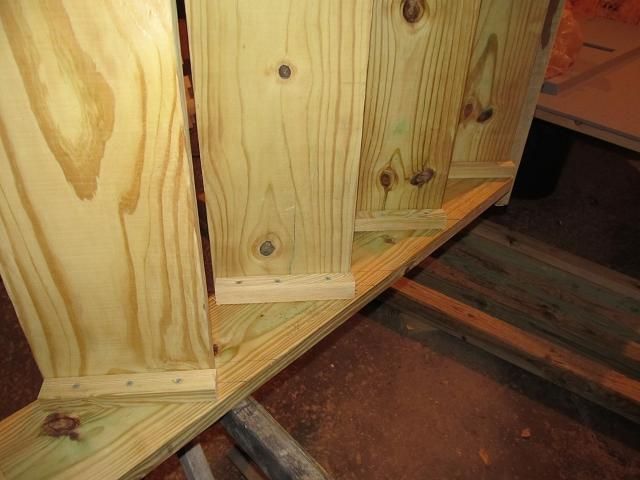  Now I need to get back to making all the sliding plexiglass windows for the rest of the blind. |
|
|
|
Post by Ron Kulas on Apr 22, 2012 20:39:09 GMT -6
|
|
|
|
Post by Ron Kulas on Apr 24, 2012 20:27:20 GMT -6
All the windows are made and painted and the tracks installed. Time to start insulating and covering the inside walls with 1/4 inch OSB. I think I will paint the entire inside flat black. I also need to make the window counterweight system so no matter what position I want to lift the windows, they will stay up.  |
|
|
|
Post by Ron Kulas on Apr 27, 2012 21:05:59 GMT -6
I started insulating the walls with ridged foam that 1.5 thick. I have some leftovers from the last meat smoker project so I didn’t need to purchase much additional foam.  After the insulation, I covered the wall with ¼ inch OSB. 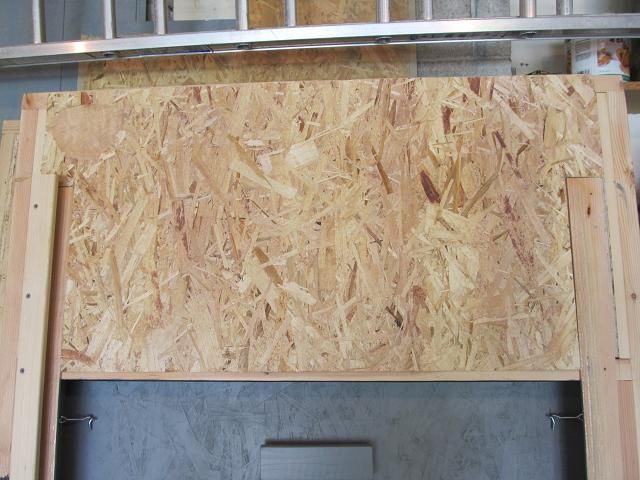 Then gave the interior a spray coat of flat black. 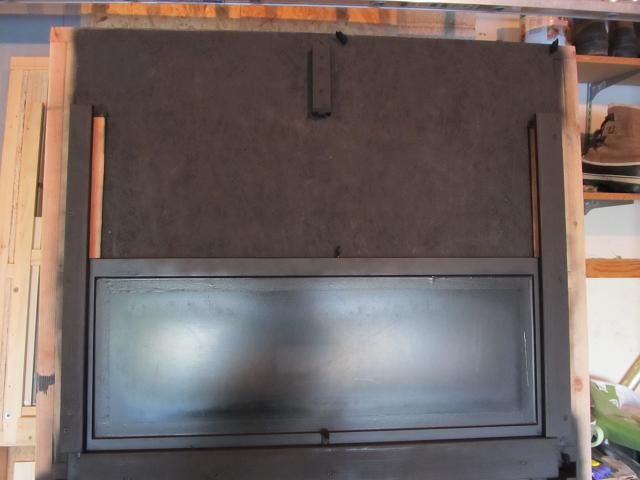 For the bottom sections, I did the same except I had to create a smaller and uninsulated area for the window counter balance weights.  The ¼ thick OSB panel that covers the counter weight has to be removable should I need to service the weight. The other portions that never need to be removed are nailed in place. 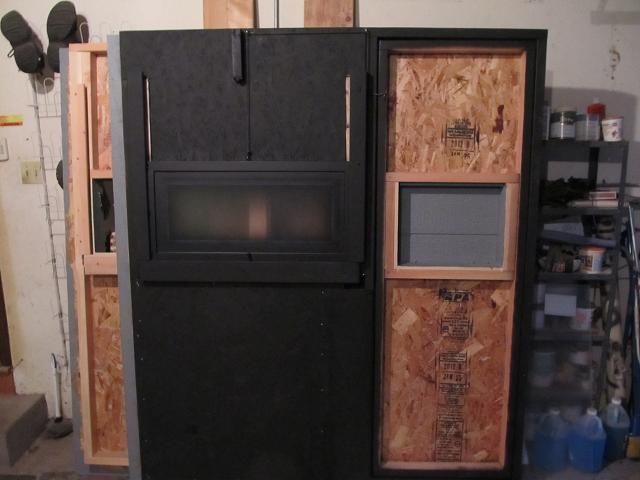 I made a short video of the windows and the counterweight. The windows will stay open in any position without needing to prop them open. They slide well and are not too noisy www.youtube.com/watch?v=KFziILaMUFk&feature=youtu.beBecause I have air vents at the top of the stand to vent off the hot air when the stand is sealed up during the off season, I needed an air inlet. I added a stainless steel mesh screen wrapped in an aluminum frame and then put a little rain guard above it. I placed it as close to the floor as I could. I think I have all the venting I need and hopefully the stand will have enough air flow to avoid getting moldy inside.  With the walls done I added a flip up shelf on the long wall and covered it with the same indoor/outdoor carpet I plan to use on the floor of the stand. Its hinged and can be lowered to lay flat against the wall when its not needed. 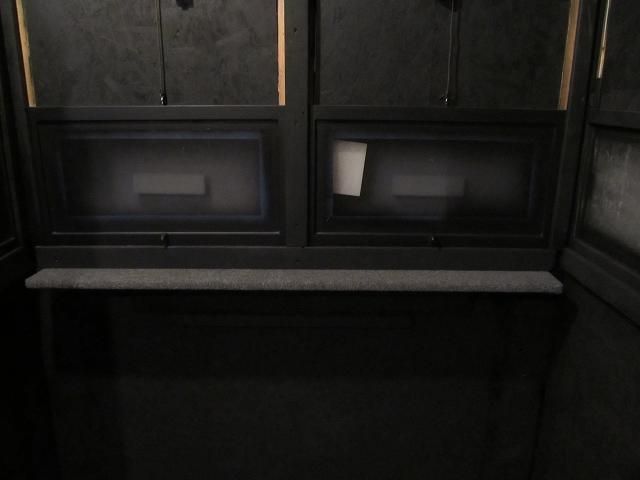  Lifting it and swinging the angle support down lowers the shelf. 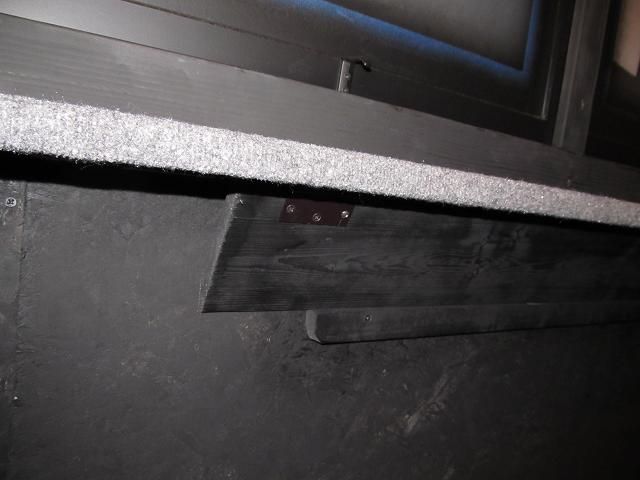  |
|
|
|
Post by Ron Kulas on May 13, 2012 14:10:10 GMT -6
|
|







































































